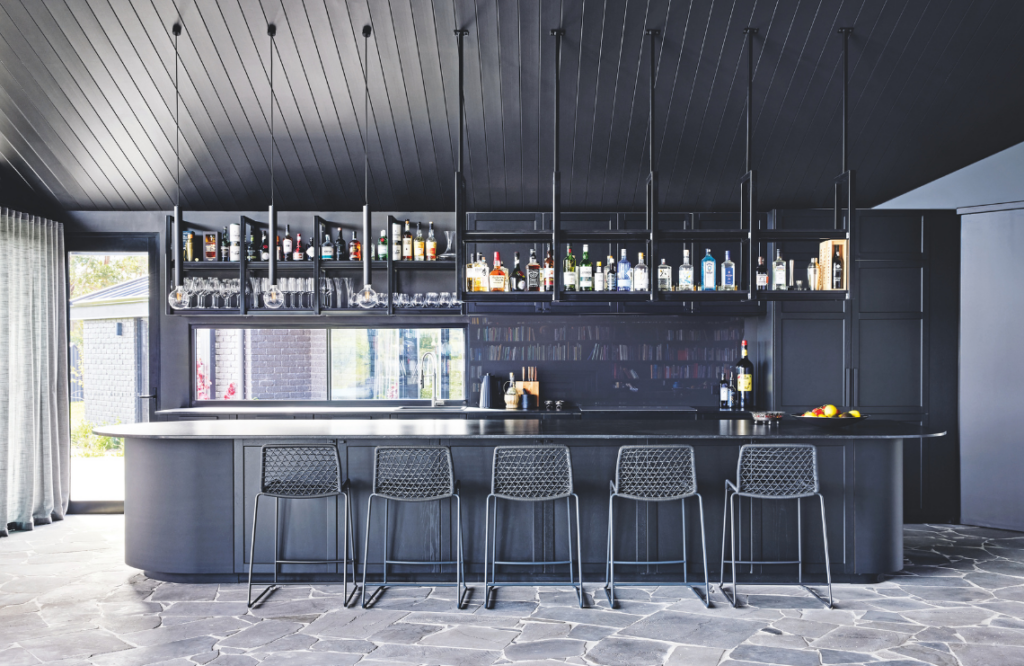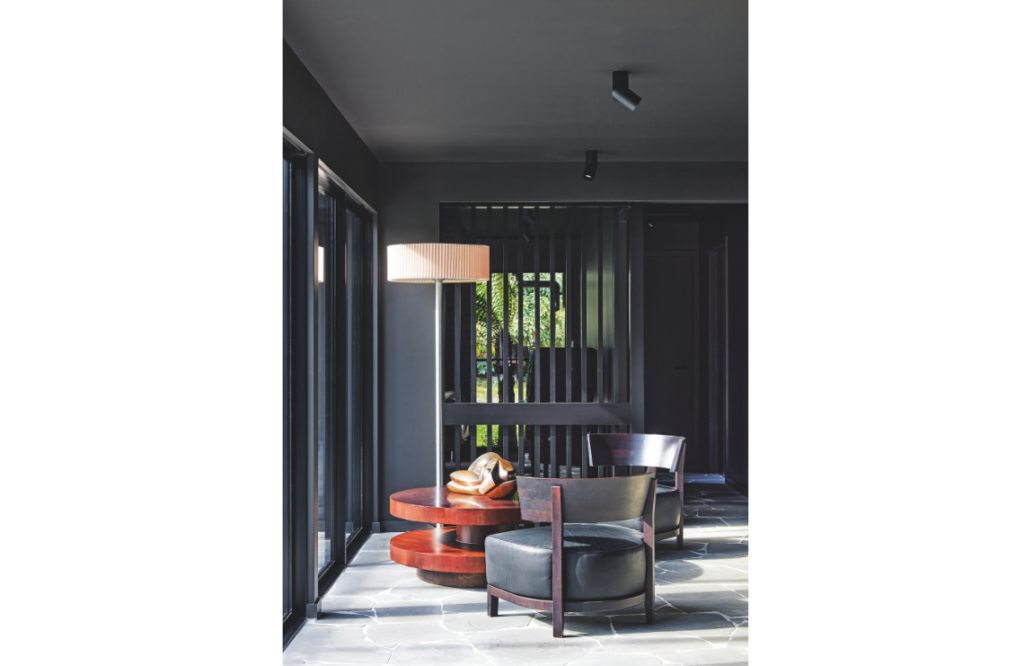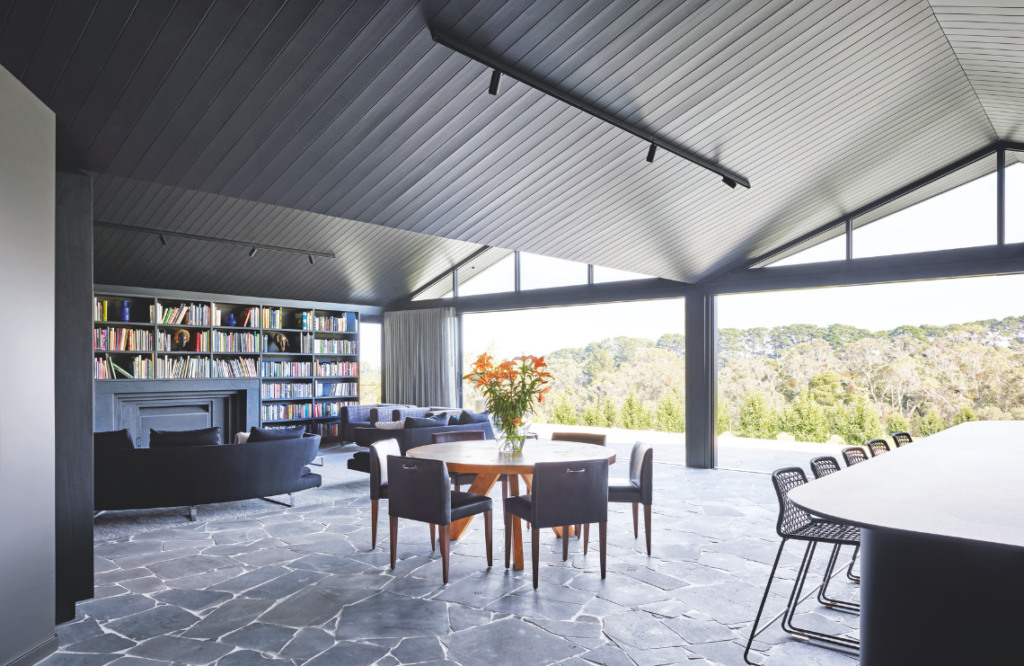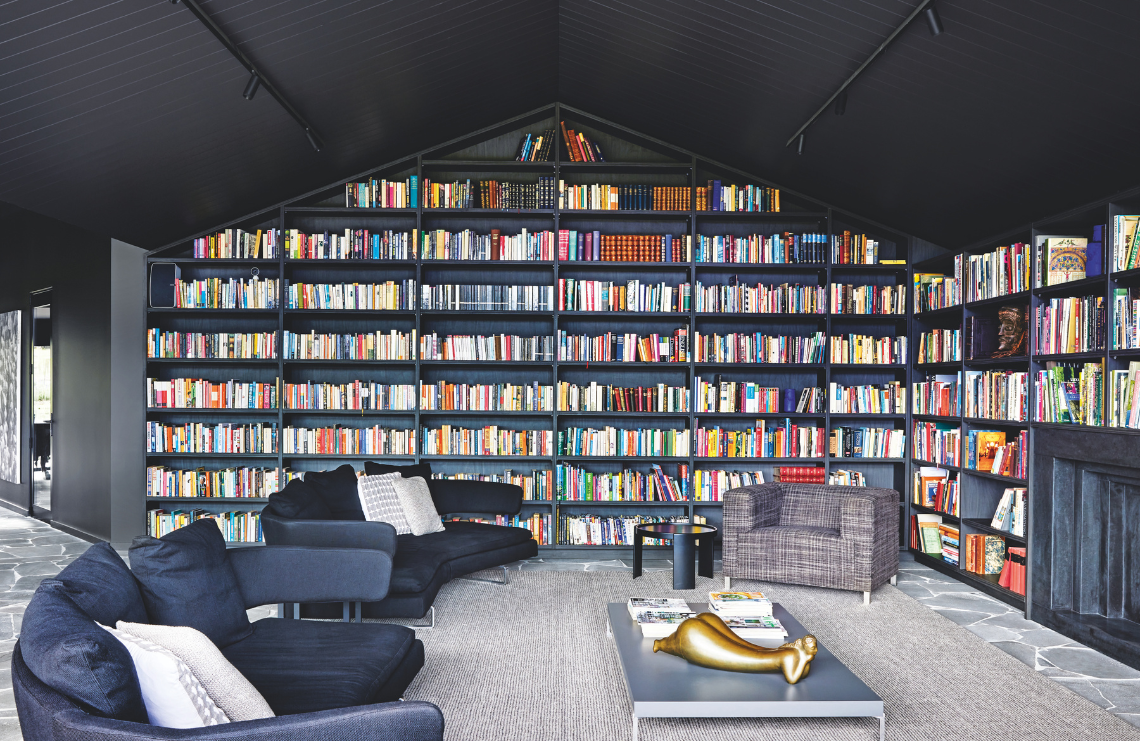Stepping over the threshold of the spacious and modern Seat House is like a warm hug. With plenty of style and charisma, it’s a delightful welcoming dwelling. It’s a far cry from its original incarnation, a pitched-roof farmhouse that was constructed in the 1980s. Aaron Neighbour from Atlas Architects says the original house had turned its back on some of the best views in Victoria — particularly from the west. “Our clients wanted to insert a new dimension that embraced, celebrated and centred the view so that no matter where you are in the house, you are connected to nature,” he says.

The semi-retired clients wanted a family home that would cater for extended family, where generations could gather together and connect with each other. Aaron says they desired a residence that was unapologetically for living. “A home where living areas are prioritised above all else, creating a space that welcomes family and encourages connection, reunion and shared experiences,” he explains.
The project involved a renovation of the existing home and the addition of a large family room extension which incorporated a new kitchen, living and dining space. The existing building needed to be reskinned to create a new exterior appearance that melded flawlessly with the new living areas.
Overcoming Design Challenges and Creating a Harmonious Home
There were some challenges with the Seat House project. One was the roofline; in its existing format, Aaron described it as “a bit messy. We had to figure out a way to modify and evolve it without disturbing the buildings form.” A steel fascia pergola structure enveloped the existing building. It solved the issue, offered privacy, and created a northern courtyard.

The project balanced creating open spaces and ensuring more intimate areas that assured privacy. The resulting home is now an artful fusion of minimalist and modern. The dark interior colour palette echoes a minimalist vibe. There is also an underlying premise that comfort is paramount. It’s still a farmhouse, and yet it is so much more.
A Strong Connection Between Architecture and Landscape
Aaron says it’s highly adaptable and centred around family, utilising practical, honest materials in an elegant yet simple design. “It incorporates strong, bold structures that speak of the strength and angularity of the surrounding landscape, and draws on a soothing charcoal palette that echoes the richness of the local loam soils, enveloping and calming those welcomed in,” he enthuses.

Some organic and raw materials found in the project include a stone benchtop and fireplace, and also the bluestone crazy paving. This was chosen because the textured stone surface creates unity inside and out, between the old and the new, says Aaron. “It fosters an understanding that although modern and considered, this is not a precious building but a cosy, well-used home,” he notes.
Blurring the Line Between Old and New
Creating a project such as the Seat House was like a symphony in motion. Each and every element needed to work in harmony. Aaron says they worked extremely hard to create something that looks effortless. “Though the brief was multifaceted, our key driver was to blur the line between old and new, between inside and out, between simplicity and complexity,” he says. As a result, the team meticulously discussed, examined, and tested each facet of the project, implementing it only if it fit like a seamless piece of the puzzle. If it did not, it was back to the drawing board — good enough was never on the table.
Connecting Nature with the Interior
Given its location, a sense of connectedness with nature was important, and not just the views. In the courtyard, plants will grow over the coming seasons, furthering that organic connection. The social and entertaining hub has a “gentleman’s club” aesthetic. It’s refined and handsome, warm and welcoming — the perfect place to entertain.
Aaron says, at its very heart, this project was really about how we allow architecture to truly integrate with the landscape. “People forget how important this is,” he muses. “In The Seat, the landscape flows effortlessly, fluidly into and through the building and becomes the focal point, the nucleus connecting all elements; the dark interior creates a dramatic yet unpretentious stage for nature.”















